How to Write Internal Conflict and External Conflict in Screenwriting
Combining internal and external conflicts is a character writing secret that will make your screenplays compelling.
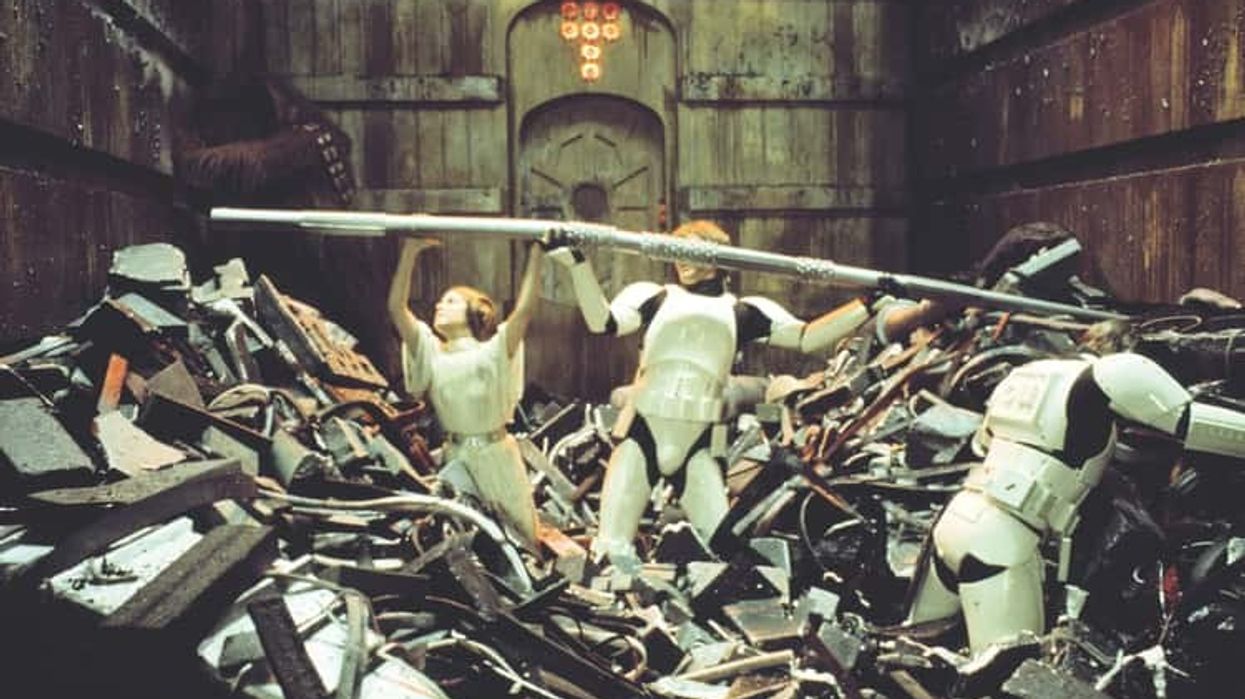
We all know what it's like when we see a character whose story draws us in ultimately. When we sit down to write, even with that lofty goal in mind, it can be hard to figure out what makes a character and story great. The answer lies beyond the surface level, in something much deeper called internal conflict.
Writing conflict may seem like a challenge, but it's the key to making your story leap off the page and live in the minds of audiences forever.
In this post, we're going to cover the conflict from every angle, with tons of conflict examples, and the result will be that you'll understand how to employ both types in a story.
Let's dive into inner conflict and then go from there.
Internal Conflict VS External Conflict (Writing Advice)www.youtube.com
What is the Internal Conflict definition?
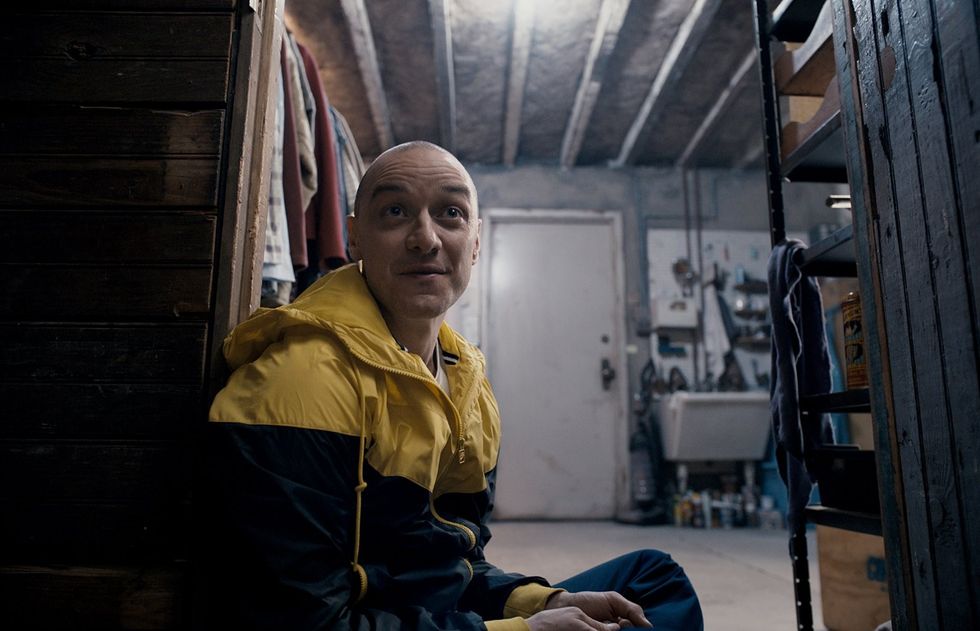
'Split'
Fox
A writer can define this as the struggles going on within their characters.
A few classic examples could be depression, alcoholism, fear of commitment, or even the evolving personality like the James McAvoy character in Split.
What is an inner conflict if not having conflicting people inside yourself?
Internal Conflict Examples
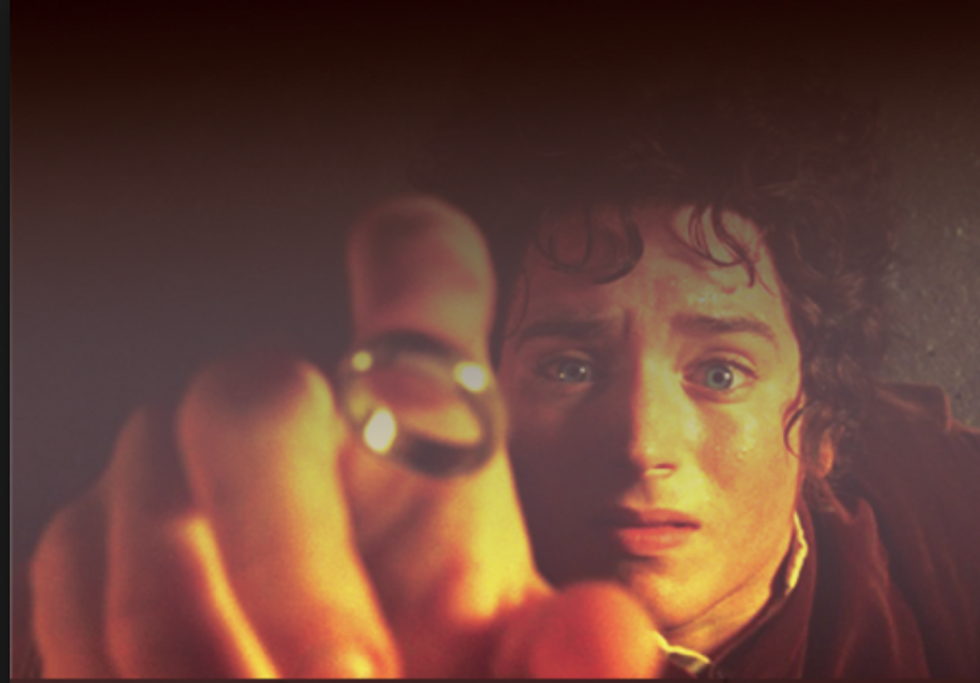
'The Lord of the Rings'
New Line Cinema
It’s hard to build a movie around only internal conflict ideas, but people try to do it all the time, and with the right ideas... it works perfectly!
Sometimes it’s an internal struggle like Indiana Jones coming to terms with his relationship with his father. Or other times the conflict is more central, like Frodo fighting against the ring’s power in Lord of the Rings.
External Conflict Definition
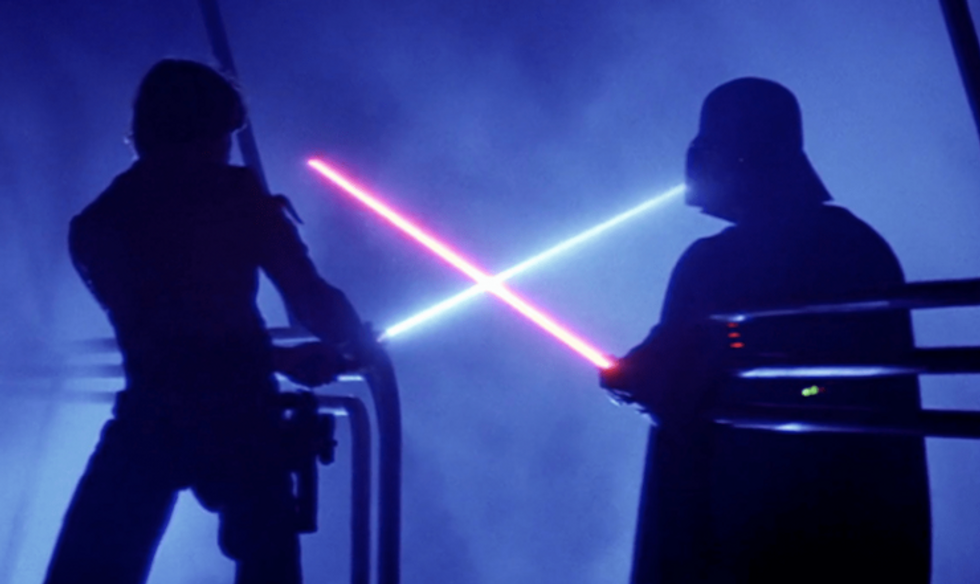
'Return of the Jedi'
Disney
This one is going to be a bit easier to define.
Think of it as the physical struggle between your character and outside forces, even including other characters.
These are the outside pressures slowing crushing in on your character. Things like maybe being stuck in a trash compactor, or the impending attack of a star destroyer, or being hunted by the Sith.Also, non-Star Wars related things too.
But the fundamental difference between the internal and external conflict is that one happens inside the character, and one happens outside. Sounds obvious, sure. But to give your story layers, you want to have both, and you want to find ways for them to feed off one another.
External Conflict Examples

'Raiders of the Lost Ark'
Disney
Sometimes the struggle on the outside is what causes the battle on the inside.
Because basically when you’re writing a movie or TV show, you need things to go wrong. No one wants to read a script or watch a tv show about the village of happy people.
When things go wrong, usually they become conflicts on every level of the characters life. This kicks a story into gear.
Nazis are chasing you to the ark. E.T. needs a way to go home. Aliens have invaded Earth.
And other non-Spielberg examples.
The great thing about the external variety is that they can come in all shapes and sizes. They can be the computers in The Matrix controlling the world, or they can be a nurse trying to catch Jinx, the cat in Meet the Parents.
The size of the conflict isn't as important as the stakes, or the character facing the battle.
So what's the key to writing this?
It's putting a character with the right internal conflict in the right external conflict... Okay, that sounds a little messy, so let's get another example.
If that ship in Titanic is sinking, Rose should examine whether or not she loves and believes Jack and wants to save him.
If Morpheus has been taken by Agents, Neo needs to look inside and see if he’s actually “The One.”
Another way to think about it is who is the worst person internally suited to face this external problem? Or vice versa.
Got it? Okay now, let's dig even deeper.
If you’re planning to write a screenplay, for TV or movies, you need to know about the other types of conflict.
Internal and External Conflict
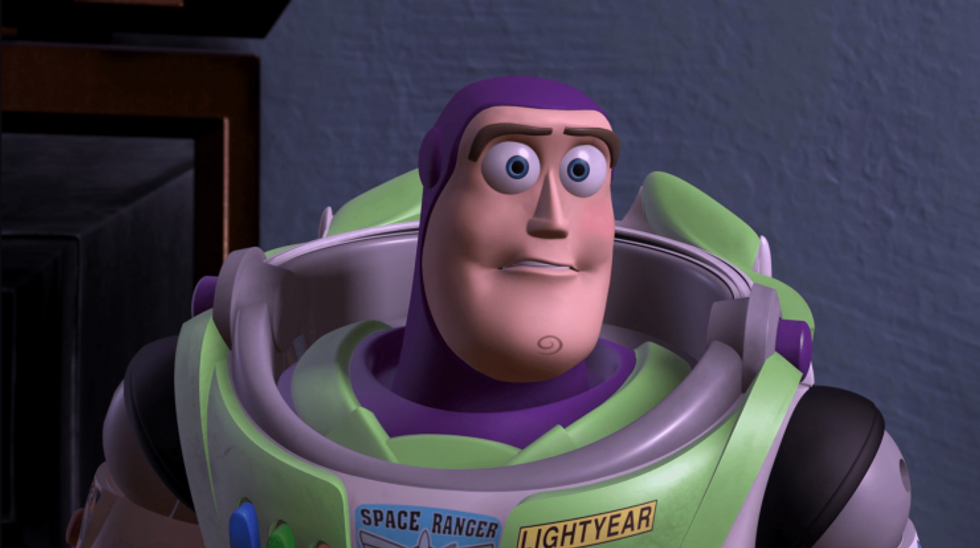
'Toy Story'
Pixar
When I think about internal and external conflict, I think about the angel and devil on each shoulder. These conflicts should eat away at your characters’ insides and thus drive the story forward.
Think about every rom-com you love. From It Happened One Night to Set It Up, romantic comedies are stories of internal struggle.
The “will they or won’t they” can carry Jim and Pam, or Sam and Diane. You can define the conflict as wanting someone but also having reasons, like a workplace, that hold you back from it. Every scene between these characters is then charged with that struggle.
That's how you use inner conflict in a story to make a scene where two people are talking as dynamic (or maybe even more dynamic) than a scene of two people fighting.
Or what about another tremendous and unexpected example?
Think of Buzz Lightyear in the original Toy Story. He is conflicted because he thinks he's Buzz Lightyear and not just a toy.This clash between his internal state and his reality charges every single scene. It is the engine that drives the plot, created the timeless classic, and launched a franchise.
Writing conflict fundamental to your screenplay's success and thinking about these examples should help get you on your way. Consider your character, and then consider the inner struggle that defines them.
Sometimes you need to compound the conflict though.
Time to define external conflict, and talk about internal vs. external conflict, which creates a conflict symphony within your story.
What are the Types of Conflict?
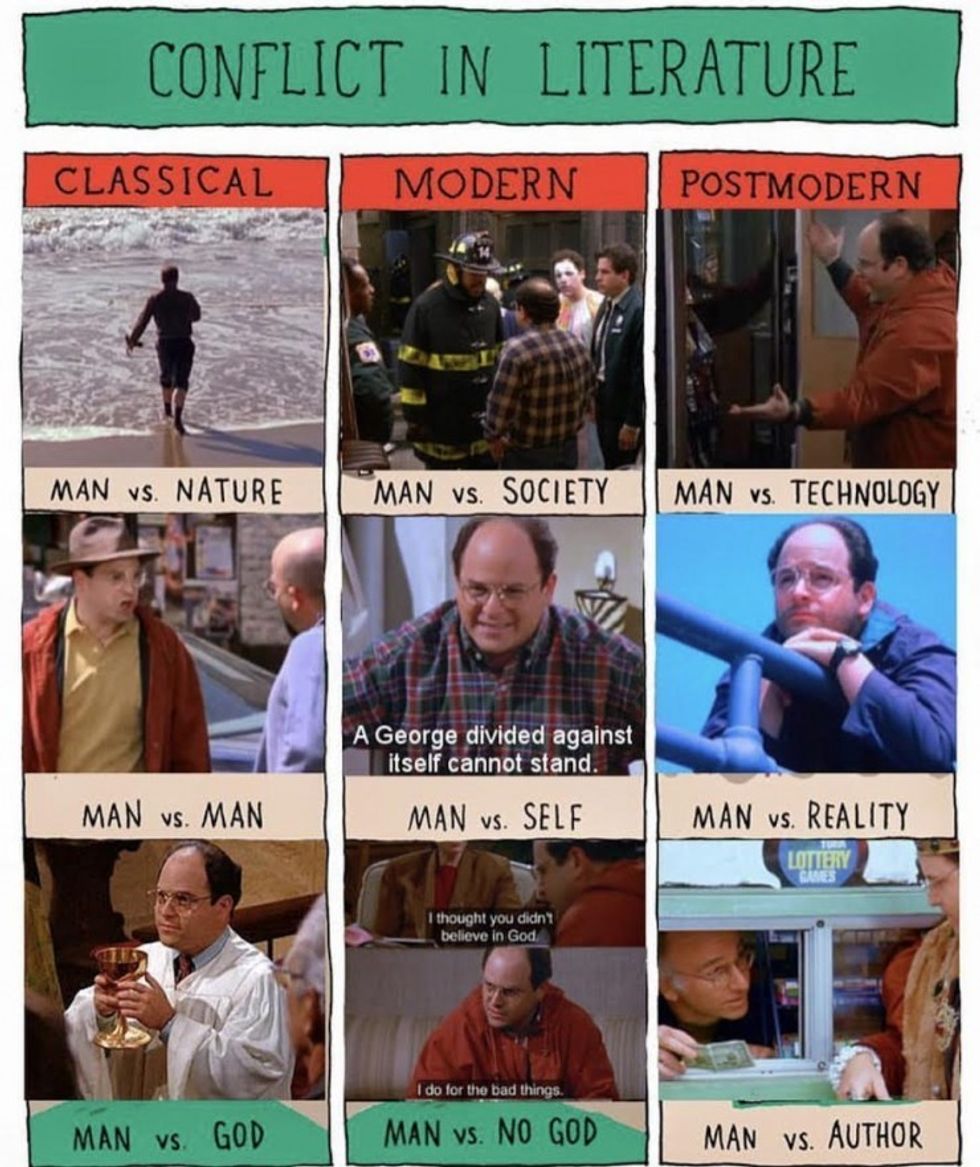
So in classical literature, and now film and television, there are six different types of conflict. While more seem to be classified as internal conflict or external conflict, we’ll take a look at each category and supply examples.
Man v. Self
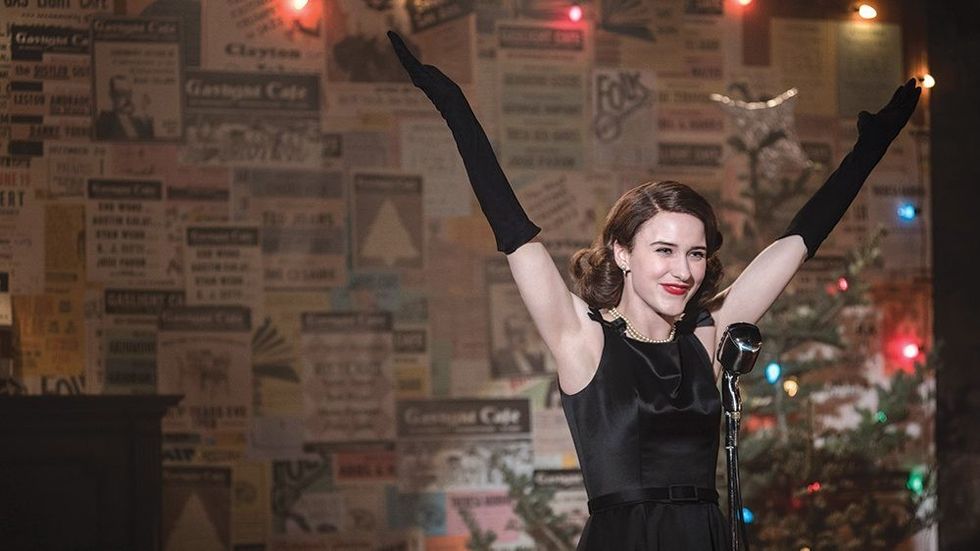
'The Marvelous Mrs. Maisel'
Amazon
Okay, right from the get-go we’ll delve into something that seems like it could strictly be classified as being internal. In Man vs. Self, we traditionally follow what happens in the mind of a character. Whether it’s Don Draper trying to get over self-destruction, or the Marvelous Ms. Maisel conquering becoming an independent woman.
But some of the best writing takes a spin on this and creates external issues from the internal struggle.
Think about the movie Multiplicity. That’s legitimately inner struggle come to life. Or what about all the personalities in Orphan Black?
Sometimes our best writing comes from taking a traditional conflict and flipping it on its head.
2. Man v. Man
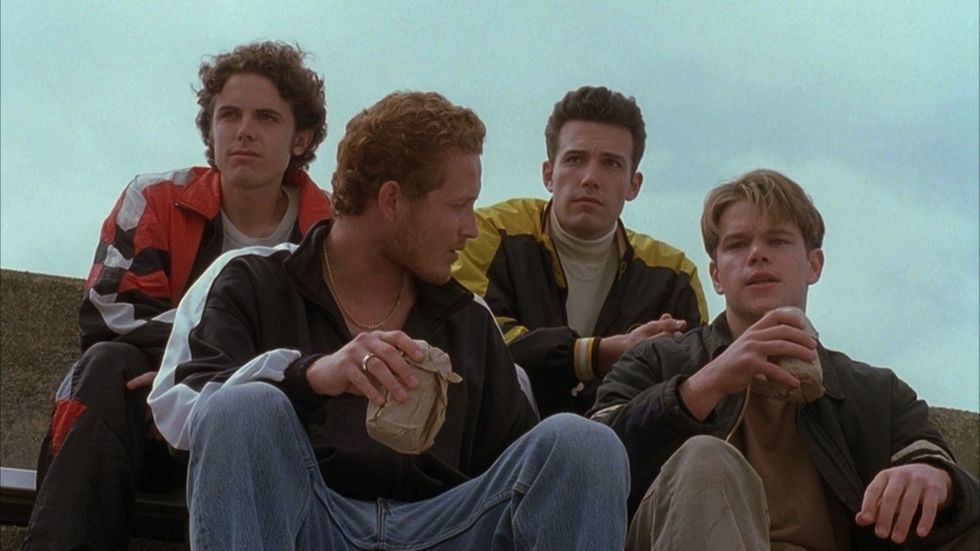 'Good Will Hunting'Credit: Miramax
'Good Will Hunting'Credit: MiramaxThis is probably the most common external struggle. We see it in comic book movies, Star Wars, and even in sitcoms like The Good Place. This type of conflict is determined by protagonists and antagonists.
But how can Man vs. Man be internalized?
Truly, if you internalize it, you get Man vs. Self, but think about movies about the possessed when Voldermort takes over Harry’s body in Order of the Phoenix, or even the possessions in Get Out.
Those become inner conflicts as one person tries to take over another.
3. Man v. Society
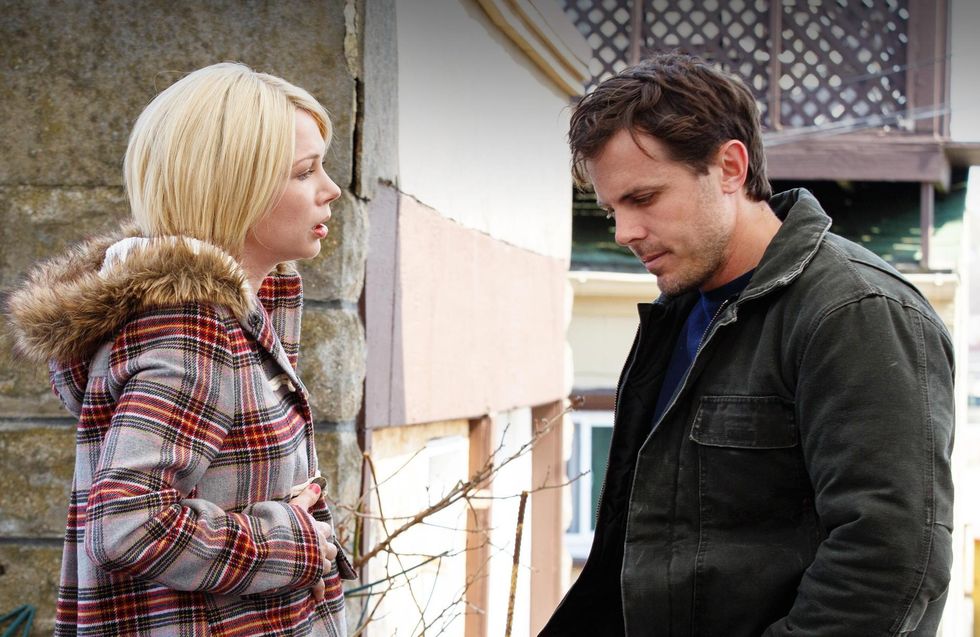
'Manchester by the Sea'
Amazon
Usually the topic of political thrillers, or tragic movies like The Elephant Man, this typically covers these types of outer conflicts
One of my guilty pleasure movies is Conspiracy Theory with Mel Gibson and Julia Roberts. That’s about a guy who everyone thinks is nuts, who happens to be right about one thing.
In television, you’ve got shows like Succession that show the inner workings of a family and the people trying to tear them down in hilarious ways.
But how can you make Man vs. Society internal?
What about a movie like Boys Don’t Cry? That story is about how society refuses to accept who Brandon Teena is on the inside.
Or what about Manchester By The Sea? A lot of the conflict in the movie comes from how Casey Affleck’s character is viewed in this town after the fire. And how he deals with it.
As you can see, it’s harder to peg some of these within the realm of television, because tv allows characters to evolve and grow over multiple seasons.
Think about Oscar on The Office. He was never conflicted about being gay, but it took multiple seasons for the other characters and Michael Scott to truly accept him.
4. Man v. Nature
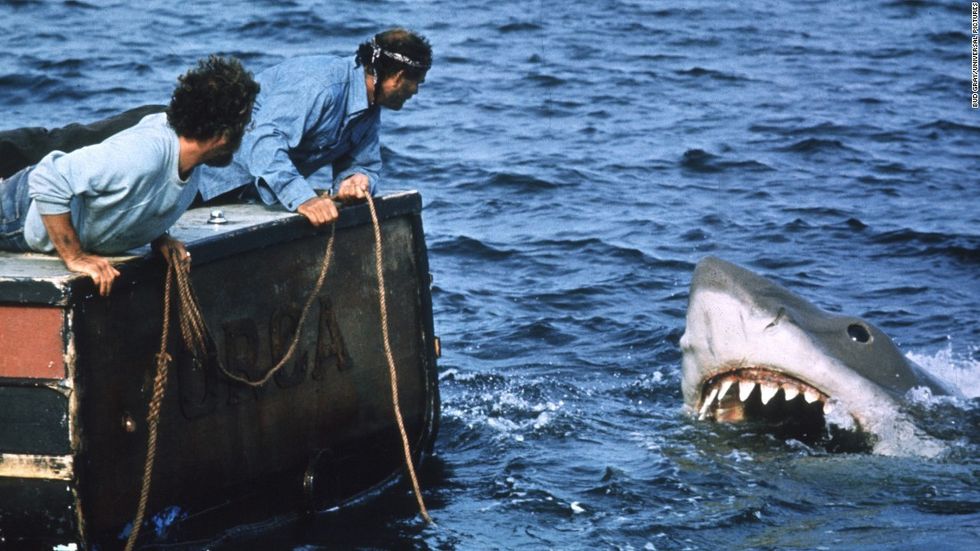
'Jaws'
Universal
I’m not sure there’s a better example here than The Revenant when it comes to Man vs. Nature. This type of conflict carries us on journeys like Homeward Bound and is about defeating external forces.
In television, Man vs. Nature usually comes up episode to episode. It feels like every sitcom has a camping episode. One of my favorites comes from New Girl, where they stare down the coyote.
But what’s the inner issue that arises with nature?
I’ll admit this is a stretch, but I like to think about characters like the Wolfman, or even Fiona in Shrek when I’m breaking this down.
These are people stricken with a change in nature, who have to balance their lives around said change. What’s more internally conflicting than that?
5. Man v. Machine
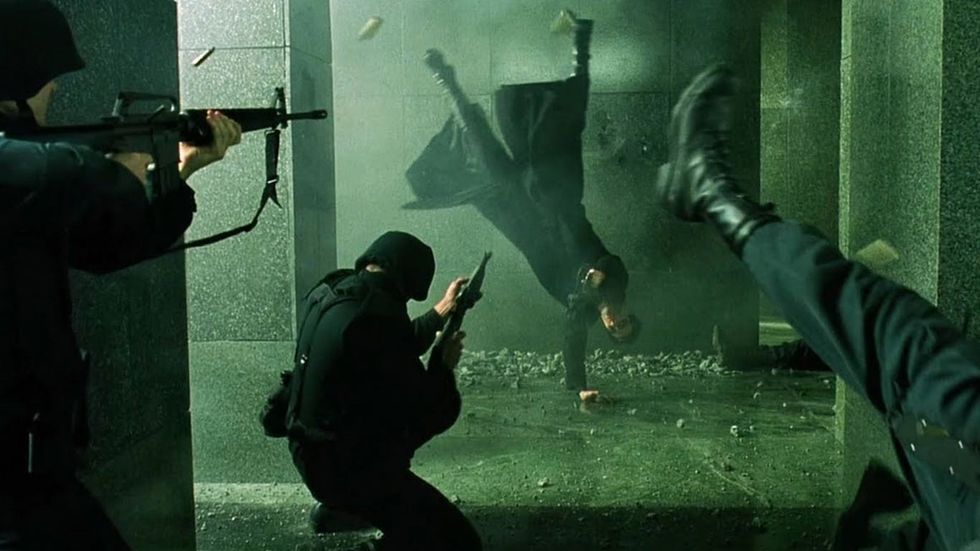 'The Matrix'CREDIT: Warner Bros.
'The Matrix'CREDIT: Warner Bros.As we enter the robot era of real-life, Man vs. Machine seems less far-fetched and more plausible. This story has its roots in John Henry hammering spikes against a machine and has worked its way all the way up to iRobot.
I think the cooler parts of Man vs. Machine come from characters dealing with things internally. Like what about Terminator 2, where that machine has to learn to be better? It has to make an internal change to try to be more human.
Or even stuff like Artificial Intelligence, where the robot boy desperately wants to change to become real. But his programming will never allow that.
Again - these are reaches - but that tends to be where our most incredible stories lie. In the grey areas between accepted tropes.
6. Man v. Fate or the Supernatural
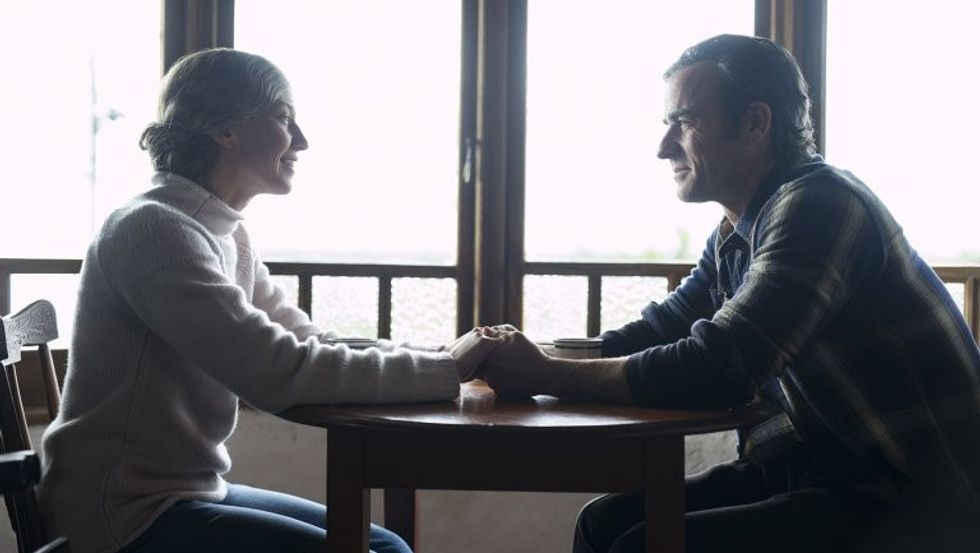 'The Leftovers' Credit: HBO
'The Leftovers' Credit: HBOLastly, we’ll cover a tricky one. Man vs. Fate/Supernatural is kind of a sticky subject. See, the problem is, these items aren’t always tangible.
I like to work my way into this section by going a little biblical. Think about the story of Job. There are great references to Job’s story across film and television.
It pops up in The Leftovers, Mission Impossible, and is the basis for the Coen masterpiece, A Serious Man.
Job’s predicament is that God and Satan keep messing with him. So he has to overcome all sorts of external nightmares. But the bet God and Satan make is whether or not they can control him internally.
That’s a double whammy.
How to Use The Types of Conflict in a Screenplay
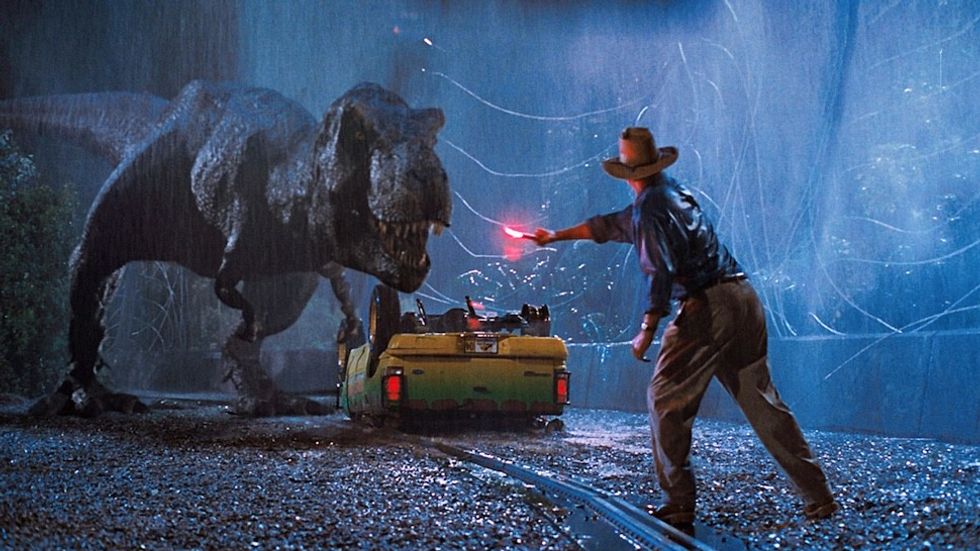
'Jurassic Park'
Paramount
When you sit down to write your screenplay, sometimes it helps to track how the various conflicts play off each other as the story moves forward.
I like to think about each level of conflict being the side of a car.
If you just have one sides’ wheels moving, your story goes in circles. But if both sides are rolling, your story will always push forward.
So how can you use the types of conflict to push your story forward?
As I mentioned prior, you want to get everything working in tandem.
So, in every scene, ask yourself, how does this work with the conflict I'm writing?
Let’s take a look at a few scenes and examine the fact.
In the final scene of The Good, The Bad, and The Ugly, we have a gunfight going on. But as the camera spins, so do the characters’ insides.
This whole movie is about trust and greed. Can you trust someone who is greedy? Is there honor among thieves? What does it mean to be a good person?
So here, you have the obvious external threat from the guns and internal issues from the hearts of the men who wield them.
What about a comedy?
For my money, the funniest scene in movie history is the “Frank and Beans” scene in There’s Something About Mary.
It’s pretty obvious to see that the external conflict has to do with what’s stuck in Ben Stiller’s zipper. And everyone coming inside the bathroom.
But the deeper inner issue at work is about love.
Ben Stiller has courted this girl, fallen for this girl, and now he’s dealing with the emotional weight of wrecking their perfect prom.
It’s kind of a sweet, emotional conflict if you think about it.
I know we chatted about those genres, but what about action movies?
Let’s talk Die Hard.
The standoff in the final scene is one of legend. We remember the badassery of John McLane, but this is a movie built on his internal conflict.
John loves his wife, but he hasn't been great at supporting her. And there have been consequences to that...
We learn early on she’s gone back to her maiden name.
As Hans Gruber plummets to his death, we send him off with Holly’s watch with her maiden name on it.
It’s the perfect external symbol for their internal triumph.
John and his wife are going to get back together.
Merry Christmas!
Summing up the Keys to Writing Conflict in a Story
I think we can all agree that the best-written film and television takes characters on multiple journeys. We need to see what they’re going to physically surmount on the outside to know how it will reflect on the inside.
And vice-versa.
The best uses of conflict work in tandem to create gripping drama. Or gripping comedy.
Just make it gripping!
If you think about how these types of conflict work in everything you watch, and then start to apply those principles to your own work, suddenly you'll unlock the ability to push your stories to more dynamic places.
So keep the forum going!
Do you have some amazing examples? Do you have some ideas about types of conflict we didn't mention?
Let us know!
I look forward to hearing your thoughts!
- Elements of Storytelling That Will Help You Write Emotionally Dynamic Scripts ›
- Watch: What Superman Teaches Us About Character and Storytelling ›
- The Definitive Guide to Conflict in Storytelling ›










![Ethos, Pathos, Logos: 20 Effective Ways to Advertise [Infographic]](https://nofilmschool.com/media-library/ethos-pathos-logos-20-effective-ways-to-advertise-infographic.jpg?id=34064614&width=600&height=600&quality=90&coordinates=560%2C0%2C0%2C0)

